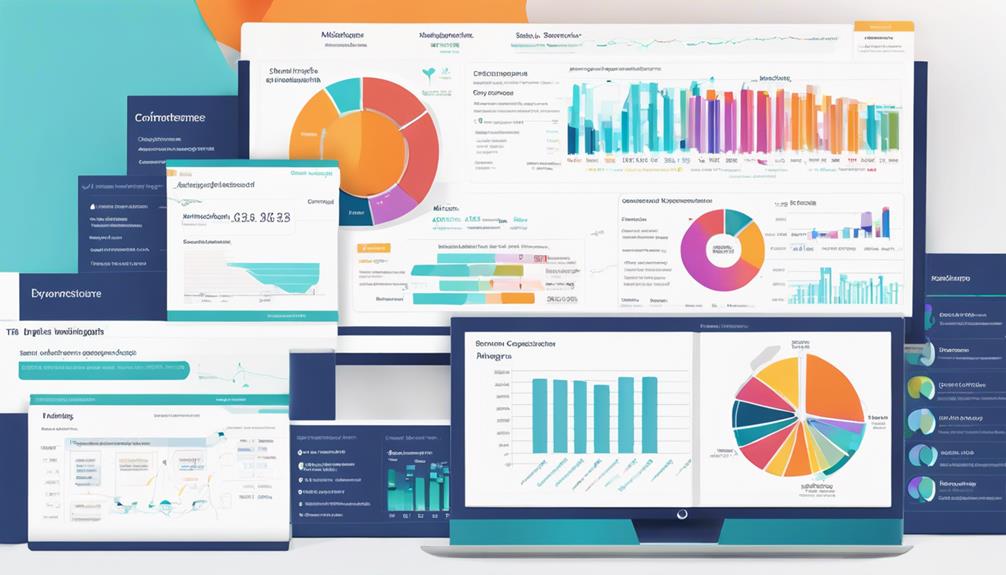Managing Human Resources in a Forward Merger

HR professionals play a crucial role in managing the complexities of a forward merger. They conduct thorough due diligence, align employee terms and conditions, and ensure legal compliance to facilitate a seamless integration process.
Identifying redundancies and retaining key talent are essential for optimizing the workforce. Navigating legal procedures, maintaining transparent communication, and guiding employees through the emotional stages of transformation are vital tasks for HR professionals.
Aligning organizational cultures, planning the workforce, and establishing transparent compensation structures are critical for driving employee engagement and retention during a forward merger. Leveraging technology empowers HR to drive integration success effectively.
By taking a holistic approach, HR professionals can navigate the challenges of a forward merger and ensure a successful transition for all employees involved.
Key Takeaways
- Before finalizing a forward merger, it is crucial to conduct a comprehensive due diligence process to ensure that the terms of all employees are aligned, contracts are analyzed, and legal compliance is met. This step is essential for a smooth integration of the merging entities.
- Identifying redundancies within the workforce and focusing on retaining key talent are key strategies in optimizing the post-merger workforce. By aligning HR strategies with the overall goals of the merger, companies can ensure a more efficient and effective transition.
- Legal compliance must be a top priority throughout the merger process. Transparent communication with employees, along with effectively managing the change process, can help build trust and boost morale within the organization.
- To successfully integrate organizational cultures in a forward merger, it is important to align values, promote collaboration, and address any resistance that may arise. Creating a unified vision for the merged entity can help foster a sense of belonging and purpose among employees.
- Implementing initiatives for workforce planning, establishing transparent compensation structures, and developing robust employee development programs are essential steps in driving post-merger success. These strategies can help ensure that the newly merged company is well-positioned for growth and sustainability in the long run.
Importance of HR M&A Professionals
HR M&A specialists play a crucial role in ensuring the success of a forward merger by conducting comprehensive due diligence and aligning employee terms and conditions. They meticulously analyze the contracts of incoming employees to evaluate the potential post-merger impact, ensuring legal compliance and employee coherence. By safeguarding the terms in accordance with local regulations, they uphold fairness and transparency, essential for a seamless integration process.
Their proficiency in efficiently managing policies and procedures post-merger is key to streamlining the integration. By creating a detailed matrix that delineates various entitlements, they standardize HR processes and ensure uniformity across the merged organization. This meticulous approach and proactive stance enable them to address potential issues proactively, thereby enhancing the overall merger’s success.
The expertise and strategic vision that HR M&A professionals bring to the table make them invaluable partners in navigating the complexities of a forward merger. Their ability to foresee challenges, mitigate risks, and facilitate a harmonious integration process are instrumental in realizing the full potential of the merger.
Identifying Redundancies and Key Employees
In a forward merger, it’s crucial to identify redundancies and retain key employees to ensure the success of the combined organization. Analyzing the roles, responsibilities, and skills across both entities is essential to eliminating duplicate positions and streamlining the workforce.
By conducting data-driven assessments, we can objectively pinpoint redundancies and recognize the critical talent necessary for a smooth transition.
Understanding the essential skills and roles needed in the new organization is vital for effective workforce planning and resource allocation. Retaining key employees, those with specialized expertise and institutional knowledge, is paramount for maintaining business continuity and ensuring a seamless integration.
This process aligns the merged HR strategies, optimizing the workforce to meet the evolving needs of the organization.
Ensuring Legal Compliance and Communication

Navigating a forward merger involves ensuring robust legal compliance to protect employee rights and organizational interests. Effective communication strategies are equally crucial to promote transparency, manage expectations, and align employees with the merger objectives.
Navigating Legal Procedures
Legal compliance is crucial throughout the merger process to align with labor laws and regulations and mitigate potential legal risks. By engaging experienced legal counsel, we can ensure that employee contracts, benefits, and policies are in line with the new requirements.
Effective communication with employees is key during this period of change. Transparency about the legal aspects of the merger builds trust and sustains morale. Documenting all legal procedures and communications creates a clear record to address any future legal challenges.
Our strategy for navigating the legal landscape involves three essential steps:
- Reviewing and adjusting employee contracts, benefits, and policies thoroughly to align with post-merger legal requirements.
- Consulting legal counsel to guide us through the intricate legal procedures and ensure the merger’s legality.
- Documenting all legal communications and processes meticulously to reduce potential legal risks in the future.
Effective Communication Strategies
Maintaining clear and transparent communication with employees is crucial during a merger to ensure compliance with labor laws, protect employee privacy, and honor contractual commitments. Implementing effective communication strategies that provide concise, timely, and honest messages to all employees throughout the merger process is essential. This involves keeping employees updated on any modifications to benefits, policies, and organizational structure, which is vital for fostering employee trust and boosting morale.
In a forward merger, two companies combine to form a new entity, with one company taking the lead. This type of merger allows for a smoother transition and integration of operations, as the acquiring company absorbs the target company. By clearly communicating the rationale behind the merger, the expected changes, and the benefits for employees, organizations can help alleviate uncertainties and concerns among their workforce.
Research shows that companies that prioritize transparent communication during mergers and acquisitions are more likely to retain top talent, improve employee satisfaction, and enhance overall performance. By engaging in open dialogue, addressing employee questions and concerns, and providing regular updates, organizations can navigate the complexities of a merger more effectively and ensure a successful integration process.
Maintaining Transparency
Prioritizing legal compliance and transparent communication is crucial for effectively managing human resources during a forward merger. By complying with relevant labor laws and openly sharing information with employees, we can establish trust, reduce uncertainties, and facilitate a seamless integration process.
Transparency plays a vital role in several key areas:
- Decision-Making Process: It’s essential to communicate the reasons behind the merger and the decision-making process clearly to address employee concerns and dispel any rumors.
- Merger Timeline and Changes: Transparent communication about the merger timeline, key milestones, and upcoming changes can help minimize resistance and enhance employee engagement throughout the integration process.
- Regulatory Compliance: Strict adherence to legal requirements and regulatory standards is necessary to prevent potential issues or penalties, ensuring the organization’s interests are protected during the forward merger.
Managing the Change Process
Navigating a forward merger involves guiding employees through the emotional stages of transformation, from the initial shock to eventual acceptance. People react differently to change, and these varied responses can significantly impact their commitment and engagement levels. Therefore, effective change management is crucial for the success of a merger transition.
Cultural integration in a forward merger entails identifying and aligning key values and behaviors from both merging entities. Business leaders play a vital role in driving this cultural integration through strategic initiatives. By promoting transparency and open communication, they can help employees navigate the change process more smoothly.
Ultimately, managing the change process is about empowering employees to embrace the new direction. With the right support and guidance, they can transition from resistance to enthusiasm, leading to the long-term success of the merged organization.
It’s a delicate balance, but one that’s essential for navigating the complexities of a forward merger.
Integrating Organizational Cultures

Creating a unified culture that aligns organizational values is crucial in a forward merger. This alignment fosters cross-functional collaboration and promotes a shared vision, leading to enhanced overall performance. Overcoming resistance and managing diverse employee expectations will require addressing differences in leadership, communication, and decision-making styles.
In a forward merger, where two companies combine to create a stronger entity, integrating organizational cultures is key to success. By understanding the types of mergers and acquisitions, companies can navigate the complexities of bringing together different teams and systems. This process involves identifying common values and goals, establishing clear communication channels, and fostering a sense of unity among employees.
Research shows that forward mergers have a higher success rate when there’s a focus on creating a cohesive culture. By aligning values and promoting a shared vision, organizations can overcome challenges and drive performance improvements. Companies that effectively manage the integration of cultures are more likely to achieve their strategic objectives and create a positive working environment for their employees.
Aligning Organizational Values
Integrating organizational cultures in forward mergers is crucial to ensure the alignment of values, beliefs, and behaviors within the newly formed entity. Research indicates that cultural alignment plays a pivotal role, with up to 23% of merger failures attributed to cultural discrepancies. Therefore, it’s imperative to identify and address these similarities and differences early on to facilitate a seamless integration process.
Aligning organizational values post-merger establishes a shared vision and common values, fostering a unified culture that encourages collaboration and synergy. Employing cultural artifacts, rituals, and communication strategies can further solidify the new organizational culture and enhance employee engagement. By proactively addressing cultural nuances, we can guarantee a smooth merger that maximizes the benefits of this forward integration.
While integrating organizational cultures may present challenges, it’s a necessary step in securing the long-term success of our merged entity. Let’s tackle this task with a focus on innovation and a commitment to nurturing a vibrant, harmonious culture that brings out the best in our employees.
Fostering Cross-Functional Collaboration
Now that the cultural integration process is in motion, our focus shifts to promoting cross-functional collaboration throughout the newly merged organization. By connecting different teams and departments, we aim to capitalize on valuable synergies and spark innovation.
As HR professionals, we understand the importance of leveraging the diverse perspectives and strengths brought by both organizations to enhance post-merger performance. Through effective communication strategies, we’ll address cultural disparities and cultivate a unified culture that embodies the shared values and vision of the new entity.
Encouraging cross-functional collaboration demands a proactive approach. We’ll facilitate joint projects, interdepartmental meetings, and team-building activities to foster understanding and teamwork. By dismantling silos, we can encourage the exchange of ideas, nurture creative problem-solving, and drive continuous improvement.
Our ultimate objective is to cultivate a harmonious workforce that operates in harmony, capitalizing on the complementary capabilities of each function. Through this collaborative effort, we aim to unlock fresh avenues for innovation and position the merged organization for sustained success.
Workforce Planning and Stakeholder Alignment
In a forward merger, it’s crucial to strategically plan our workforce to align with the new organizational structure. This involves assessing current skills and roles to ensure a smooth transition into the new setup. Key to this process is ensuring stakeholder alignment, garnering their support and buy-in for the upcoming changes.
To streamline the integration post-merger, we’ll identify redundancies and key talent through our workforce planning initiatives. This data will be instrumental in optimizing the new organizational design for maximum efficiency. Effective stakeholder communication and engagement are equally essential during this transformative phase, as managing expectations and addressing concerns openly will be critical.
It is also important to establish clear role alignment and transparent grading structures to facilitate a seamless transition for employees into their new positions.
Transparent Compensation and Benefits Structures

Establishing transparent compensation and benefits structures is crucial in a forward merger. It can help build trust and engagement among employees. Clear communication about new benefit packages and compensation changes is key to maintaining high morale.
Providing detailed information about post-merger compensation and benefits can support efforts to retain top talent.
Transparently outlining the process for making compensation decisions post-merger can reduce uncertainty and resistance among employees. A well-structured compensation and benefits plan that aligns with the new organizational vision can drive employee engagement and retention effectively.
Transparent compensation structures can enhance overall employee trust and satisfaction during a forward merger. This, in turn, will position the company for success by ensuring a stable and motivated workforce during a period of significant change.
Comprehensive Employee Development Program
Enhancing our organization through a robust employee development program is crucial, especially during a forward merger. Besides offering competitive compensation structures, investing in tailored development initiatives can bring substantial advantages. For instance, a well-crafted program has the potential to boost employee engagement and retention by up to 25%. It can also lead to a 10% increase in productivity and a 20% reduction in turnover rates. Customizing development plans to individual needs may result in a remarkable 36% enhancement in employee performance.
The benefits of a structured development program extend beyond individual growth. Companies that implement such initiatives are three times more likely to retain top talent post-merger. Effective employee development efforts can drive a 24% increase in overall company performance and profitability.
Leveraging Technology for Integration Success

Technology integration plays a vital role in ensuring seamless HR support and driving organizational success during a forward merger. Selecting the appropriate technology solutions can help us streamline HR processes, enhance data management, and boost overall efficiency.
Collaborating with experienced service providers will enable us to establish a robust technology infrastructure that aligns with our strategic HR objectives and facilitates a smooth integration.
The leadership summits led by the CEO and CFO have rightly emphasized technology as a critical component of successful integration. However, it’s essential to empower HR professionals to take a central role in this process. Given that HR professionals dedicate a significant portion of their time to administrative tasks, neglecting their needs in technology integration could impede overall integration success.
To achieve optimal results, it’s imperative to identify the right technology support system through strategic partnerships with service providers. By effectively incorporating technology into HR integration, we can drive improvements in processes, data management, and overall organizational success in the context of a forward merger.
Frequently Asked Questions
What Happens to HR During a Merger?
In a forward merger, the focus shifts towards reshaping the organizational culture, retaining key talent, integrating compensation systems, aligning employee benefits, addressing employee concerns, enhancing communication channels, aligning HR policies, planning for workforce changes, facilitating team integration, and ensuring compliance with legal requirements to drive the success of the merger.
Forward mergers involve the consolidation of two companies, with one company absorbing the other. This type of merger allows for a seamless integration of operations, resources, and workforce, leading to a more efficient and cohesive organization. By focusing on these key areas, HR plays a critical role in ensuring a smooth transition and maximizing the benefits of the merger for both companies involved.
What Is a Challenge for Human Resource Management During Mergers?
Did you know that an overwhelming 83% of mergers end up failing due to significant human resource challenges? As HR professionals, we face the critical task of managing employee retention, integrating different organizational cultures, and ensuring effective communication to facilitate a successful merger and minimize any disruptions that may arise.
When considering the types of mergers and acquisitions, one prevalent scenario is a forward merger, where one company merges with and absorbs another company. In such cases, HR plays a crucial role in aligning the workforce, harmonizing policies and procedures, and fostering a cohesive working environment.
To overcome the common pitfalls that lead to merger failures, HR professionals must focus on creating a seamless transition for employees, promoting a shared vision and values across the merged entities, and establishing open channels of communication to address any concerns or uncertainties that may arise during the integration process.
What Is the Strategic Role of HR in Mergers and Acquisitions?
In the realm of human resources, we strategically utilize talent management tactics, employer branding initiatives, culture integration efforts, and change management techniques to ensure seamless transitions during mergers and acquisitions. By harmonizing workforce planning, technology utilization, employee engagement strategies, and performance evaluations, we play a crucial role in driving successful organizational transformations.
One common type of merger that HR professionals often deal with is a forward merger, where one company absorbs another to expand its market share or diversify its product offerings. In these situations, HR plays a vital role in facilitating the integration of the two organizations, aligning their processes, systems, and people to achieve synergy and maximize the benefits of the merger.
Forward mergers can present unique challenges, such as cultural clashes between the merging companies, redundancy in roles and responsibilities, and potential resistance from employees. HR professionals are instrumental in addressing these challenges through effective communication, training programs, and change management initiatives to ensure a smooth transition and minimize disruption to the workforce.
What Steps Can HR Professionals Take to Ensure That Mergers and Acquisitions Are Successful?
To ensure the success of mergers and acquisitions, HR professionals can implement talent management strategies that focus on integrating employees from both companies seamlessly. By identifying key talent, assessing skill gaps, and providing development opportunities, HR can create a cohesive and high-performing team post-merger.
In a forward merger, where one company merges into another, it is crucial for HR to onboard new talent efficiently. This involves providing clear communication about the merger process, introducing employees to the new organization’s values and goals, and offering support during the transition period. By making new employees feel welcome and valued, HR can help them quickly adapt to their new roles and contribute to the overall success of the merger.
Aligning performance management frameworks is another essential step in ensuring a successful merger or acquisition. By establishing clear performance expectations, providing regular feedback, and offering development opportunities, HR can help employees understand how their individual contributions impact the larger organization. This alignment fosters a culture of accountability and continuous improvement, driving overall performance and success in the post-merger environment.
Conclusion
We’re experts at handling human resources in forward mergers. Our approach involves identifying redundancies, blending organizational cultures, and implementing comprehensive development programs.
We ensure a seamless transition for everyone involved through transparent compensation structures. With our proven strategies, we minimize disruptions and maximize employee satisfaction throughout the process.
Trust us to navigate the complexities of a forward merger with precision and care.





